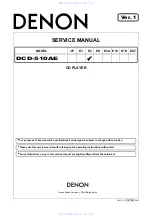
South Bend Tools
For Machines Mfd. Since 12/20
Model SB1108/SB1109
-49-
TROUBLESHOOTING
Fuzzy grain.
1.
Workpiece has high moisture
content or surface wetness.
1.
Allow workpiece to dry if moisture content is over
20% or has high surface wetness.
2.
Dull inserts.
2.
Rotate/replace inserts (Page 30).
Consistent
chipping pattern.
1.
Knots or conflicting grain direction
in workpiece.
1.
Inspect workpiece for knots and grain direction; use
only clean stock (Page 25).
2.
Nicked, chipped, or dull insert.
2.
Rotate/replace insert (Page 30).
3.
Feed rate too fast.
3.
Reduce feed rate (Page 28).
4.
Depth of cut too deep.
4.
Reduce depth of cut (Page 28).
5.
Bed rollers set too high or low; not
even with each other.
5.
Properly adjust bed roller height (Page 29).
6.
Misaligned chip breaker.
6.
Adjust both sides of chip breaker to correct height
(Page 39).
Symptom
Possible Cause
Possible Solution
Long lines or ridges
that run the length
of workpiece.
1.
Nicked or chipped inserts.
1.
Rotate/replace inserts (Page 30).
Uneven cutting
marks, wavy
surface, or chatter
marks across face
of workpiece.
1.
Feed rate too fast.
1.
Reduce feed rate (Page 28).
2.
Chip breaker or pressure bar set
unevenly.
2.
Adjust height of chip breaker or pressure bar
(Page 39).
3.
Bed rollers set too high or low; not
even with each other.
3.
Properly adjust bed roller height (Page 29).
4.
Insert(s) not properly installed.
4.
Remove insert(s), then properly clean and re-install
(Page 30).
5.
Worn cutterhead bearings.
5.
Replace cutterhead bearings.
Inconsistent chip
marks.
1.
Chips are not being properly
expelled from around cutterhead.
1.
Use an adequate dust collection system; adjust
chip deflector in or out, depending on your setup
(Page 39).
Glossy surface.
1.
Inserts are dull.
1.
Rotate/replace inserts (Page 30).
2.
Feeding workpiece too slow.
2.
Increase feed rate (Page 28).
3.
Cutting depth too shallow.
3.
Increase depth of cut (Page 28).
Workpiece twists
in machine.
1.
Pressure bar set unevenly.
1.
Adjust height of pressure bar (Page 39).
2.
Bed rollers not parallel with table.
2.
Adjust bed roller height (Page 29).
















































